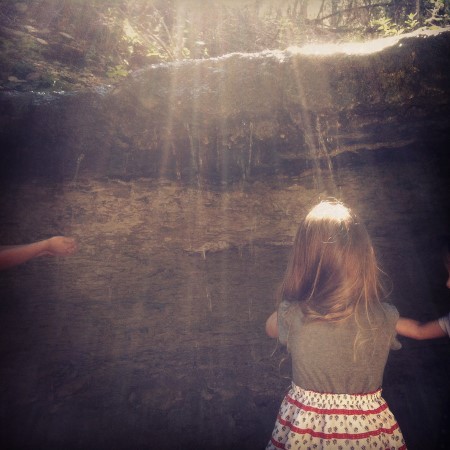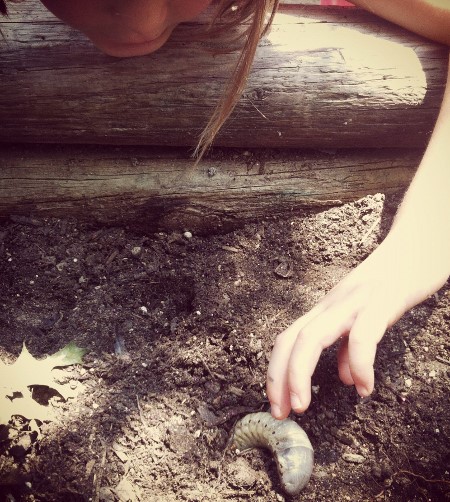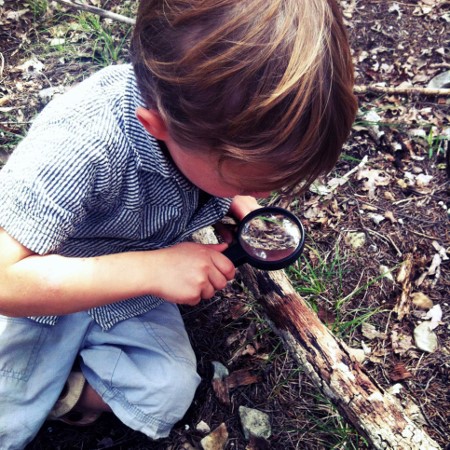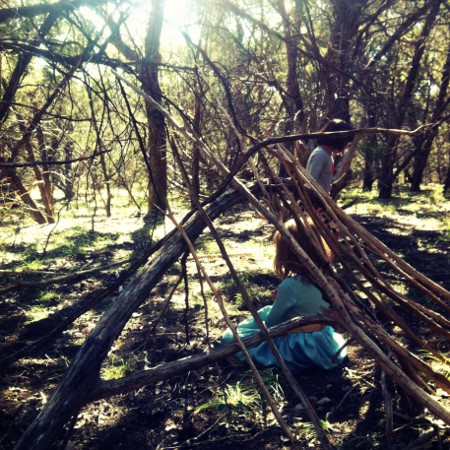Social-emotional learning during the COVID crisis: Lessons from Austin’s alternative schools
/
We have made the emotional health of our students the top priority in decision-making.
—Chris Ready, Assistant Head of School
Academy of Thought and Industry
Learning to manage emotions and maintain empathetic, healthy relationships in ordinary times is as important for young people as other kinds of learning—and it’s doubly important in times of stress and crisis. Education researchers call this aspect of education social-emotional learning, or SEL. It’s strongly tied to all kinds of supportive relationships schools build among students, educators, and parents. Most alternative schools make SEL a pivotal aspect of their curricula, offering programs like Austin Rising School’s “Kids of Kindness.”
Social-emotional learning is the foundation all other learning rests upon for students experiencing tragedy or trauma. Even in families who are in the very best situation—without loss of life or income—most kids are currently experiencing some significant anxiety and disruption. In response, family members and educators are stepping up to act as role models for emotional support. As the National Association of School Psychologists suggests, “This is a tremendous opportunity for adults to model for children problem-solving, flexibility, and compassion.”
In an effort to help Austin families dealing with the sudden transition to distance learning and to highlight what our community of alternative schools is doing right now, Alt Ed Austin conducted a survey that returned detailed responses from 35 schools. In this second installment of our series looking at changes in education as a result of COVID-19, we’re doing a deep dive into the answers to our survey, with social-emotional learning as our first topic.
Faster transitions to distance learning ease anxiety
For some schools, moving out of a physical space and into distance learning has happened quickly. We discovered in our survey that because they are smaller and more nimble, most of the 35 schools have been able to adapt easily to the new circumstances.
Parents and students at Austin’s Academy of Thought and Industry and 4Points Academy reportedly have been surprised and pleased at the ease of the transition. The speed of the transition in small alternative schools has been a big part of limiting anxiety for students—an anxiety kids in larger school systems are still dealing with, as the machinery of transitioning to online learning for thousands of students grinds slowly and fitfully forward.
Many of the schools in our survey had some component of online learning available before the pandemic arrived. As Amanda Garret of Fusion Academy notes, her school already offered virtual classes for students who had to travel or were sick. “Most teachers had already experienced teaching this way and also many students, so it was a super easy transition for us!”
In our community younger students seem to have embraced technology just as readily as older kids. Certified reading specialist Alexandra Eliot, founder of Bridges Academy Austin, which will be opening in Austin in the fall, says elementary students often adapt well to the Zoom platform. “In fact, some students pay attention better to tutoring when it is done virtually. [To help them,] I can increase the font size in their reading and point with my mouse.”
It’s important to note one key issue in terms of implementing distance learning: It’s clear from the evidence in the surveys that the relative lack of economic inequality among the students at Austin’s alternative schools has made a big difference. Most of the students already have the technology they need; they and their parents are able to use the technology; and in most cases, they have at least one parent working from home who is able to support their learning and emotional health. For kids of essential workers, those experiencing financial and food insecurity, or without the essential technology, this transition looks very different and is inherently more difficult emotionally and socially.
“We met in our gardens”
Finding time for nature and for quiet mindfulness are two aspects of emotional and social wellness that are often linked, and both came up in the survey.
Integrating time outside in nature is something parents and kids can easily forget now that we spend so much time in front of our screens. In keeping with their core mission, Earth Native Wilderness School encourages all kids to get outside and do some exploration and play. “Our Wild Life Forest Preschool has been producing some really amazing content for kids to do at home,” says Earth Native’s executive director, Dave Scott. “Seeing how excited the kids are to get on with their teachers and tackle their at-home nature challenges has been very inspiring.”
Mary Belton of Bloom Preschool said that her students “have been excited to share their gardens, so we met in our gardens one day to share what we are all growing. We also had lots of fun painting rocks together!” And Woodland Schoolhouse’s Nicole Haladyna uses Facebook as a gathering point for sharing songs, stories, updates on class pets, and nature lessons based on the trails near the school—including identifying poison ivy!
In the pursuit of good mental and emotional health for everyone, Ascent: An Acton Academy offers yoga for parents and “morning mindfulness” calls to all the learners. At WonderWell, Ashley Reinhardt says that “each day includes a “social-emotional check-in and an experience to promote self-regulation, self-awareness, and empathy.”
In a recent newsletter, Carolina Peredo of La Tribu explained her preschool’s longstanding approach for little ones: “Our Mindfulness Program has been evolving throughout the years and now includes mindfulness practices like “La Vela de la Paz” and Yoga classes. They are now available as recorded sessions led by our guides on our YouTube Channel.”
Human connections at the core of SEL
Ultimately, it’s through fostering human relationships every day that these schools support social-emotional learning. At the majority of schools surveyed, teachers are still able to connect with students one-on-one weekly, and sometimes daily. Students connect with each other in myriad ways, and educators are also connecting one-on-one with parents and offering them emotional and social support.
At the Fusion Academy Homework Cafe, teachers are available to help kids both socially and emotionally in addition to helping with normal schoolwork. Fusion’s Amanda Garrett explains, “Teachers can do breakout rooms with one or two students if needed.” For kids at Growing Curiosity Community School, connection comes in the form of fun music and Spanish mornings.
A form of one-on-one “office hours” is common at many schools, including Lake Travis Stem Academy and Parkside Community School; at the Academy of Thought and Industry, each student has a guide who acts as a coach and checks in to see where they are emotionally.
Acton Academy hosts read-alouds and hangouts at lunchtime so kids can just meet up with friends casually. They do offline challenges, which they later share online. For example, says Laura Sandefer of Acton, “We had a virtual talent show that included voting for the best of three categories. . . . We had a day for the whole community to eat popcorn and enjoy the show.” At the Westlake Campus of Acton, students do virtual PE together and are encouraged to organize virtual play dates outside of school to stay in touch. Huntington-Surrey gathers kids for Friday Night Social Hours to play games and chat in addition to their check-ins during class.
At Clearview Sudbury School, they not only help kids connect with their regular school friends, but they also facilitate connections with other self-directed learners around the world in order to share learning experiences and make new friends.
Family Gatherings and “Heroic Parenting”
Both parents and students are able to meet with teachers one-on-one at International School of Texas and have access to a Licensed Clinical Social Worker once a week. ACE Academy has enlisted its full-time counselor and is regularly sharing resources for student and parent motivation via social media.
In addition to meeting with learners in groups daily, and one-on-one each week, Abrome gathers families on Wednesdays to make it easier for them to find community. Abrome also created a mutual aid network for all its families. Griffin School calls its weekly family gatherings Town Halls.
The world of support for parents is as varied as for kids. At AHB Community School there is a big demand for adult interaction, so the school is adding coffees and social hours. Jeffrey Couvillon explains that Acton Academy Southwest Austin is focusing on parents in a new way: “We are going through a set of challenges with families called ‘Heroic Parenting,’ focused on closer family bonds and stronger family mission.”
In the end, whether it’s Griffin School’s Quarantine Quad, where each student leader checks in on three classmates, or Growing Curiosity Community School’s private Facebook group that lets families share ideas and time together, the common denominator in social-emotional learning in this period of transition is the variety and depth of human connection.
Join us in the next installment of this series for more of our community’s creativity in the time of COVID.
Shelley Sperry | Sperry Editorial



















